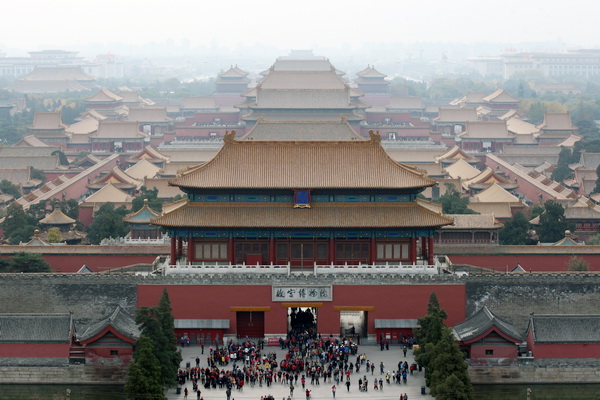

The Palace Museum in Beijing and the German Archaeological Institute (DAI) will work together to promote cultural heritage conservation in China and Germany, Beijing Daily reported.
The archaeological research institutions signed an agreement on June 24, saying they will work together to present the archaeological achievements of Forbidden City, with multiple measures planned.
Two projects titled "Study on palace remains and restoration — A case study on Forbidden City and the Roman Palace" and "A comparative study on artworks from palaces of China and Europe" will commence immediately and continue to 2019.
The museum, also known as the Forbidden City, was China's royal palace for Ming and Qing dynasties, and became listed as a UNESCO World Cultural Heritage site in 1987.
The Palace Museum has a collection of more than 1.8 million objects, 85 percent of which is made up of the Qing Dynasty (1644-1911) collection. As most artifacts were not found in the field, the museum often uses archaeological excavation findings as well as taking part in field investigations to conduct studies and test its collection.
The museum has been involved in archaeological studies since the 1950s,for example, studying the buildings, furniture, implements, as well as the apparel and accessories that appear on ancient paintings and jade. It has also worked with local archeological research institutions to study and explore kiln sites and focus on more Buddhism related archaeology.
The Forbidden City said this agreement will explore methods to benefit history and archaeological studies both in theory and practice.
It also plans to start similar archaeological projects with Southeast Asia, South Asia, the Middle East and East Africa in light of the Belt and Road Initiative.
 |
|
Overlooking the Forbidden City from Jingshan Mountain. [Photo by Wang Zhuangfei/asianewsphoto.com] |